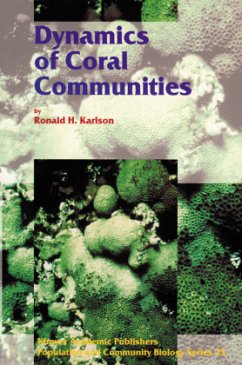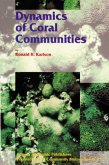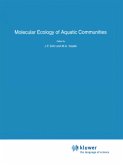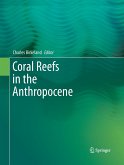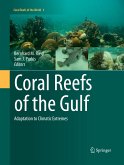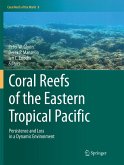Coral communities are among the most fascinating of all biotic assemblages on earth. It is their rich diversity and the strong biological interactions which characterize these communities that provides the focus for this book. Here I describe patterns of diversity, species interactions, and community organization as well as the processes which influence these structural attributes. Although this treatment of the subject will to some degree blend evolutionary and ecological phenomena, I am primarily interested in the dynamic properties of living coral communities. Hence, such processes as succession, competition, predation, herbivory, and disturbances will be emphasized in ecological terms, but not to the exclusion of evolutionary considerations. The former influence the maintenance of diversity in coral communities and local distribution and abundance patterns. The latter deal primarily with the origins of diversity, adaptations to the local environment, biogeographic distributions, and longevity in the fossil record. With the recent resurgence of interest in historical and large-scale geographical effects on the local diversity of ecological communities, ecological and evolutionary perspectives are beginning to be integrated into our understanding of community organization and dynamics. Hence, a synthesis of these perspectives is attempted in the final chapter of this book. This effort emerges as a consequence of academic experiences, research interests, and the strong influence of several individuals. My first exposure to ecology occurred at Pomona College where three faculty members guided my early explorations into this subject.
Hinweis: Dieser Artikel kann nur an eine deutsche Lieferadresse ausgeliefert werden.
Hinweis: Dieser Artikel kann nur an eine deutsche Lieferadresse ausgeliefert werden.
"The book provides a focus on the rich diversity and strong biological interactions that characterise the most fascinating coral communities. Defining community, guild, assemblage and web, the theme of the book is introduced with descriptions of the dynamics of coral community, especially of the constituent species, the interactions among them, the local environments, oceanographic transport processes, climatic fluctuations and a host of geographical and historical phenomena. The subject is narrated in thoughtfully and admirably organised chapters on diversity, stability, succession, competition and so on. Citing suitable examples, each chapter considers one or more selected principles, theories, hypotheses and models. In this process, new information is provided, for example that `coexistence competition' can be an alternative to competitive exclusion. Each chapter is closed with an overview, providing a sort of summary. The book includes useful references and subject index."
(Professor T.J. Pandian, Madurai Kamaraj University, India)
(Professor T.J. Pandian, Madurai Kamaraj University, India)

